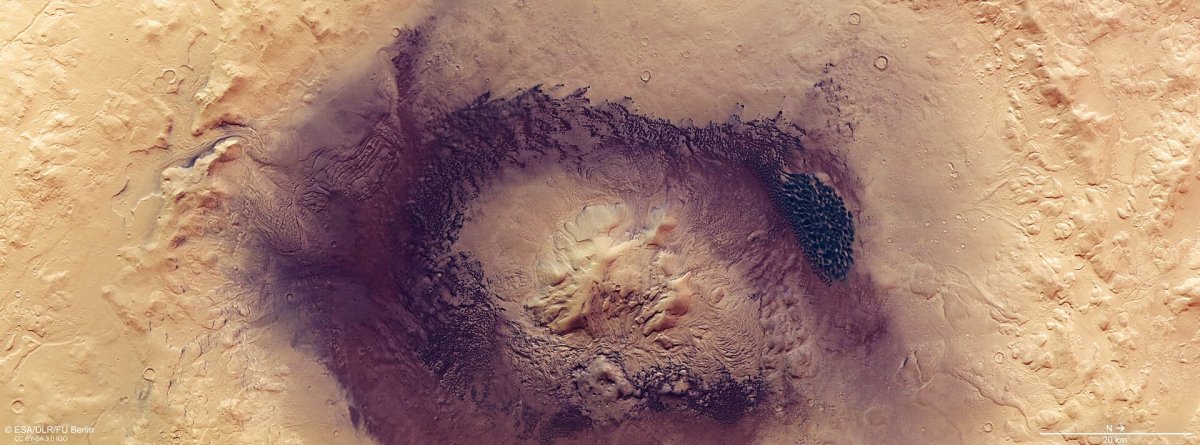
The European Space Agency (ESA)’s Mars Express spacecraft has captured images of the dark Moreux crater on the planet’s surface, an area of geological interest and striking geographical features.
“Many of the features, such as dunes and flows, surrounding the central peak and southern region of Moreux crater (to the left of the image) appear to have been formed by ice,” the ESA wrote in a blog post. “This is thought to have occurred in the form of substantial episodes of glacial activity over the past few million years. Many other features show signs of wind erosion or having been formed via wind-related processes — most notably, the dunes covering the crater floor. These dunes are largely sickle-shaped (barchanoid), and reveal much about wind direction within and across the crater.”
A second image shows a perspective view of the same crater. The central peak of the crater reaches almost two kilometers (1.2 miles) in height, while the crater itself is three kilometers (1.9 miles) deep.

The variety of colors in the images reflect the different materials which comprise the crater. The dunes surrounding the crater, which are pale yellows and oranges, are composed of sandy materials. Other areas are rich in rock-forming minerals such as pyroxene and olivine, which contain magnesium and iron which have a darker shade.
Further color differences come from the presence of particles like sand and ash, including basaltic and volcanic sand, which have been swept into the crater by the Martian winds. The dunes on the floor of the crater were also formed by the wind, and are sickle-shaped to reflect the direction in which the wind blows across the crater.
The images were captures using the High Resolution Stereo Camera instrument on the Mars Express, which has previously captured images of an icy crater on the planet’s surface and the boundary between the planet’s north and south hemispheres.



